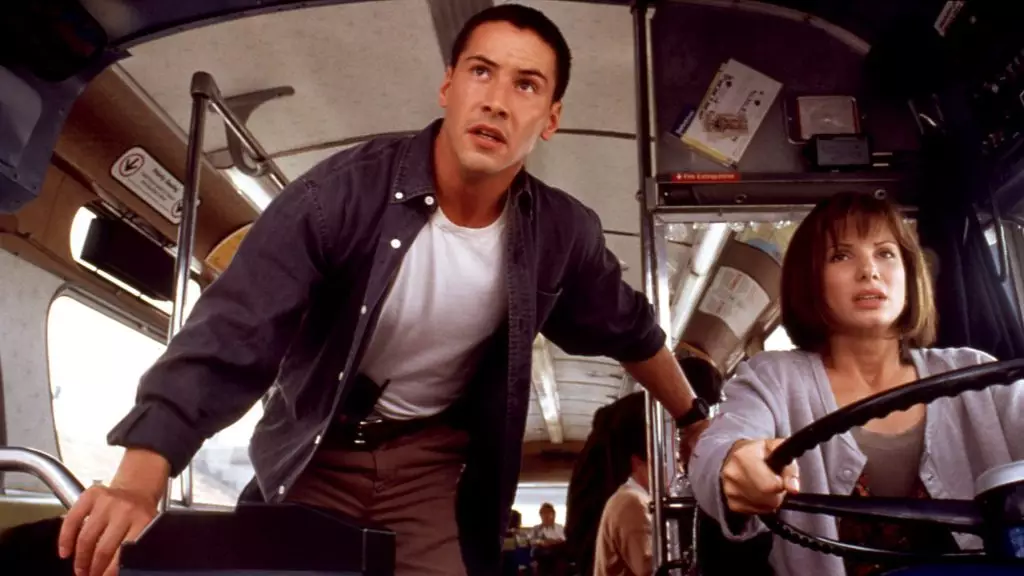As we celebrate the 30th anniversary of the iconic action film “Speed,” it’s essential to examine not just its adrenaline-fueled plot and thrilling stunts, but also the unscripted real-life experiences that shaped its unforgettable moments. Directed by Jan de Bont, “Speed” has become synonymous with high-octane cinema, yet recent reflections from its stars, Keanu Reeves and Sandra Bullock, at Beyond Fest offer an intriguing glimpse into the behind-the-scenes chaos that transpired during filming.
During the event, Reeves recounted a particularly harrowing scene that resonated as more chaotic than planned. “We were a little under-informed,” he recalled while reminiscing about the intense bus-driving sequences. As the bus crashed through traffic on the streets of San Diego, the cast’s naivety about the safety protocols set the stage for a genuinely exhilarating experience. The authenticity of the moment, with cast members screaming in genuine panic as they collided with oncoming vehicles, highlights the delicate balance between on-set safety and the thrill of action filmmaking.
Bullock chimed in to correct some misconceptions about her involvement, stating that although she held a Santa Monica bus driver’s license, she wasn’t as in control as it appeared. “It’s not an easy vehicle to maneuver,” she said, revealing the behind-the-scenes trickery that keeps the narrative immersive. The actual driving was handled by someone outside the visible scene, which created an illusion of control and added to the tension of the film. This crucial element of filmmaking speaks to the artistry involved in action sequences, where the line between actors and their dangerous environments blurs.
While “Speed” achieved critical acclaim and box office success upon its release, further explorations in the franchise have been met with mixed feelings. Bullock, who reprised her role in “Speed 2: Cruise Control,” lamented the challenges of creating a follow-up that could live up to the original’s legacy. She expressed skepticism about the current film industry’s willingness to risk a sequel that demands the same audacity and creativity that the original expressed so freely.
Reeves’ absence in the sequel left a void, with Jason Patric stepping into a new role. The shifts in casting left many fans wondering what could have been had the original duo reconnected on-screen. Bullock’s comments about the challenges of producing a third installment underscore a broader concern about how sequels often fail to capture the essence of their predecessors, making any attempts at reliving past triumphs unnecessarily burdensome.
As we reflect on the contributions of “Speed” and its ongoing impact on the action genre, its portrayal of real danger and unfiltered reactions reminds audiences of the raw thrill of cinema. In an era dominated by CGI and digital enhancements, the palpable excitement generated by those chaotic bus scenes emphasizes the importance of authentic experiences in storytelling. Whether through potential sequels or nostalgic celebrations, “Speed” remains a benchmark in action film history, representing both a cultural phenomenon and a study in the exhilarating unpredictability of filmmaking.

Leave a Reply